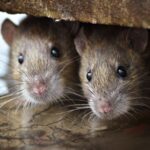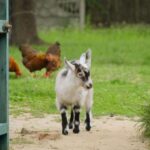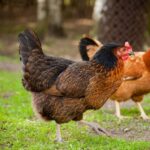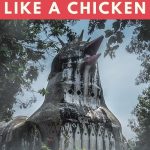A rooster is not a mammal, no. Roosters are male chickens and all chickens are classified as birds. Birds are a different class of animals from mammals and have several different physical and anatomical features and characteristics.
Table of Contents
Differences Between Birds (Roosters) and Mammals
There are some major differences between mammals and chickens. Here are some of those differences which will illustrate why roosters are not mammals:
Mammals Have Mammary Glands - Chickens Do Not

Mammary glands are the organs female mammals have that produce milk. Mammals typically nurse their young and provide milk as sustenance when they’re born.
Chickens, on the other hand, provide actual food to chicks after they’re born. They lack the glands to produce milk and do not nurse their young.
Obviously, roosters are male chickens. They would not nurse their young, that’s the job of a hen which is a female chicken.
Chickens Lay Eggs - Mammals Do Not
First of all, technically-speaking there are five living species of mammals that do lay eggs. These are the duck-billed platypus and four species of echidna (also known as spiny anteaters).
Those are the abnormalities, however. There are around 6,500 different species of mammals, and most are viviparous which means they give birth to their young.
Chickens Have Feathers - Mammals Have Fur or Hair
Just like all birds, chickens have feathers. Birds are the only animals that do have feathers, so it clearly separates them from mammals.
Feathers are designed to keep them warm and protected from the elements and injury, attract mates, and assist them in flight.
Mammals, on the other hand, have fur or hair. I’m sure you’re aware that feathers and fur are two very different things.
Mammals Have Teeth - Chickens Do Not

Another big difference between roosters and mammals is teeth. That’s right, chickens and birds, in general, do not have teeth.
Yet, they like eating hard foods like nuts, feed, and so on. They’re able to do this because of how their digestive system works.
To summarize, when a chicken eats something it travels into an area called a crop. Food stays there until they’re ready to digest it, which is usually overnight, then the food travels to their gizzard.
The gizzard is a strong muscle that “chews” up food by contracting with a mix of food and grit in it to break up the food.
Another reason why birds do not have teeth is flight. Teeth are heavy, so instead of teeth, they’ve evolved with beaks. Beaks are lighter and more aerodynamic, aiding flight.
In Summary
As you can see from the above, there is some major difference between mammals and roosters or other birds.
Roosters belong to a group of animals classified as birds, which is separate from mammals. Don’t forget, we’re classified as mammals. I’m sure you’ll agree that we have very little in common with a rooster!
Related - Are chickens mammals or reptiles? Further explinations.
Related Questions
Is a Rooster a Reptile?
Chickens have more in common with reptiles than mammals, but they are not of the same class or order of animals as reptiles.
Reptiles are a separate class of animals from birds. As are mammals, fish, and amphibians - despite all these animals sharing some similarities.
As I explained above, roosters are birds.
What Kind of Animal Is a Rooster?
A rooster is a male gallinaceous bird. Chickens are classified as Gallus gallus domesticus, which are a type of domesticated fowl.
Fowl is the name for a gallinaceous bird kept for its meat and eggs.
It can get a little confusing, can’t it? So many different classifications, names, orders, species, and more ways to describe chickens!
Are Ducks, Geese, and Swans Birds?
Ducks, geese, and swans are also birds, yes. Technically speaking, they are also classified as “wildfowl”. Wildfowl are birds that live in the wild, typically on lakes or rivers.
Resources
Image credits - Photos by Jon Sailer, Michael Anfang, and Christin Hume on Unsplash
Egg-laying Mammals - ucmp.berkeley.edu




